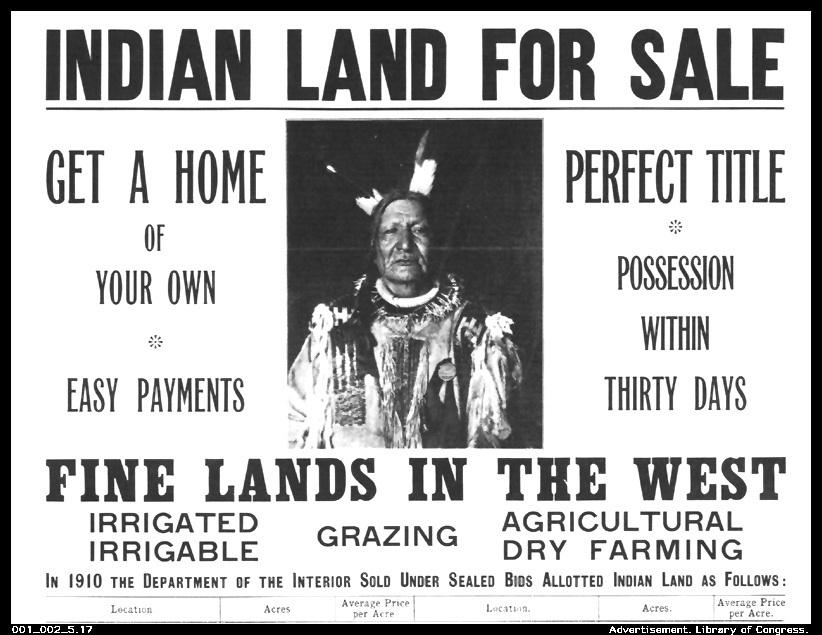The 1868 Treaty of Fort Laramie is one of many promises that established the Great Sioux Reservation. This includes the entire Black Hills and much of the surrounding area. The federal government undermined the treaty with the discovery of gold in the Black Hills and the pressure to expand westward settlement not too many years later.
Since then, Native Americans have lost vast amounts of lands across the nation because of the General Allotment Act of 1887.
As South Dakota Public Broadcasting Richard Two Bulls reports, understanding contemporary Native American issues such as systemic racism needs to come through first by understanding history.
The General Allotment Act is more popularly known as the Dawes Act. When the Great Sioux Reservation was established with the Treaty of Fort Laramie, Native Americans were still able to live practicing their traditional customs and beliefs.
Harold Compton has spent many years in a variety of land management positions for the Bureau of Indian Affairs and most recently the Tribal Land Enterprise based out of Rosebud Sioux Tribe, which he is a member also. He is currently chief operating officer at St. Francis Mission in Rosebud.
“The Dawes act,” said Compton, “it was an effort to dissolve those tribal systems that we had, that we were able to survive on for generations. And those surplus lands, it was no more than a government taking of the lands that the tribes claimed under the 1868 Treaty
One historian who worked closely with tribes being affected by dams being built along the Missouri River calls the Dawes Act a disaster to the way of life. Michael Lawson says it was destructive in taking away tribal land.
“I think that some of the creators of that statute understood that that would be the effect,” said Lawson, “where others probably thought there was a humanitarian thing where they had the idea that if they take tribal land and give people individual property rights and train them to be agricultural farmers that that would help assimilate into the dominant culture, but in so many ways it was a disaster”
According to Compton, land ownership was a foreign concept to Native Americans as they lived communally off their land.
“We did not see it from a financial aspect, said Compton. “We saw it as a relative that helped us. It became a real struggle and when the allotment act was passed, Henry Dawes, it became a real struggle for those given allotments. Many people did not really understand what was happening and the concept of individual ownership.”
After Native Americans were allotted their parcel of land on their respective reservations, the surplus land was opened for up for non-native settlement. This land was usually the best land chalked full of natural resources and was better for agriculture. Lawson says it also led to the further diminishment of individual and tribally owned land within the already established boundaries.
“In Gregory County, they opened it up for settlement I think in 1904, the surplus lands, said Lawson. “There has been this incredible rush of settlement waiting in line to file in Gregory County and there was so much non-Indians settlement that the tribe and bureau considered it to be still part of the reservation but then the state of South Dakota sued to say ‘well you know, there is so many non-Indians live here that I think, we think that this reservation has been diminished,’ and they filed suit on that…and that case went all the way to the supreme court and then in 1979 they ruled that those lands have been diminished. So they were no longer apart of the reservation.”
In 1906 Congress passed the Burke Act, a direct amendment to the Dawes Act. Compton says it was another way to landgrab.
“The Burke act came along in 1906,” said Compton, “and allowed for the Federal Government to determine if allotment owners were capable of managing their own affairs and putting their lands on the tax rolls and allowing them to be sold also to non-Indians.”
According to Compton by 1934, 100 million acres of land had been sold to non-natives within Reservation boundaries. This created an issue called “checkerboarding.’ Checkerboarding can create unique disadvantages in terms of growth and jurisdictional challenges between tribes, county and state authority of said land. Another issue tribes are actively addressing is fractionated ownership of lands that were given to the original allottee.
“In the middle of all of this we had allotees pass a way and their land becoming undivided interest based on if they hadn’t written a will and given it to one of their children or their spouse or their relative or anybody where it will still be one person owning it,” said Compton. “The land would become fractionated based on their heirs, could be their spouse could get 1/3, their children will get 2/3 and this became a huge issue [in] Indian Country and it alienated people from land ownership because now there are now many owners.”
There have been congressional fixes to land mismanagement of tribal trust assets by the Bureau of Indian Affairs. In 2010, a class action lawsuit known as Cobell Verse Salazar was settled and the U.S Congress allotted $3.4 billion to be used for a Trust Land Consolidation Fund as well as issue direct payments to class members. It also established a land buy back system for tribes, a National Commission on Indian Trust Reform, individual settlement payments and an Indian Education Scholarship fund. All done as a direct result of the failure of the Dawes Act of 1887.



